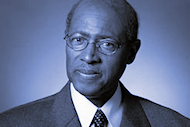USD259 must do more to maintain district equity and diversity
 It was just a year ago when the Board of USD259 voted to end it's busing for deseg program. Ending the program had been a topic of discussion for a number of years and by the time the vote was cast, scores of information and research had been obtained about the possible and perhaps likely outcomes.
It was just a year ago when the Board of USD259 voted to end it's busing for deseg program. Ending the program had been a topic of discussion for a number of years and by the time the vote was cast, scores of information and research had been obtained about the possible and perhaps likely outcomes.
We made it clear that from our research, most similarly situated districts that ended their deseg programs experienced a 4 to 5 year cycle wherein they saw:
- a return to practically single race schools
- a gradual migration of highly qualified and experienced teachers from the predominantly African American Schools to the predominantly White and suburban schools (which is a feature of teachers union contracts that allow them to move with seniority)
- the replacement of those highly qualified and experienced teachers with newly minted and inexperienced teachers
- a precipitous decline in test scores
- adapted curriculums (more block hours on NCLB testable disciplines to the exclusion of civics, the humanities, and some science courses)
- increased focus on basic proficiency and a decreased focus on high achievement
- a 'hardening' of the achievement gap
But while the district has taken some really positive steps, it is clear that more attention is required. IF we are to avoid the aforementioned chain of events, then the District is going to have to take some focused and deliberate action. We already see our new K-8 Gordon Parks Academy within 20 points of becoming a single race school along with rapid demographic shifts in many other school around the district. And the much needed brick and mortar improvements promised by the bond issue will do nothing to arrest our momentum.
If we are to ensure diversity and equity, then we need to go back to the map and redraw our neighborhood school boundaries. The AAA neighborhood for student assignment purposes was defined by residential segregated housing patterns. To truly move beyond race in education, we should abandon the old 'race-conscious' district maps and develop new school boundaries using the same growth and capacity formula that we would use anywhere else in the city. If we all work together to reexamine school boundaries and determine how best to assign students, we can maintain district diversity without a deseg program.
It is also critical that the District draft policy that speaks directly to the issue of equity in teacher assignments. The number of highly qualified teachers and the average levels of experience within each school should be monitored and there should be some safeguards against any school falling behind the others in these categories.
In a recent article for the New Yorker Magazine, Malcom Gladwell stated the following:
Eric Hanushek, an economist at Stanford, estimates that the students of a very bad teacher will learn, on average, half a year’s worth of material in one school year. The students in the class of a very good teacher will learn a year and a half’s worth of material. That difference amounts to a year’s worth of learning in a single year. Teacher effects dwarf school effects: your child is actually better off in a “bad” school with an excellent teacher than in an excellent school with a bad teacher. Teacher effects are also much stronger than class-size effects. You’d have to cut the average class almost in half to get the same boost that you’d get if you switched from an average teacher to a teacher in the eighty-fifth percentile. And remember that a good teacher costs as much as an average one, whereas halving class size would require that you build twice as many classrooms and hire twice as many teachers.
These are known issues; either we address them, or we'll experience them.
We as the Wichita Branch remain actively and fiercely committed to three principles with regard to education within the district:
- All schools should be staffed with highly qualified and experienced teachers
- All students should be met with high expectations and academically rigorous curricula
- All buildings should present a positive and diverse learning experience










